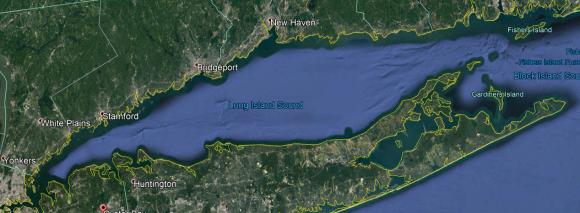 When my wife and I recently passed through Western Long Island Sound near City Island on a recent Saturday morning, we saw dozens of fishing boats — large and small, including at least three kayaks outfitted for fishing. I recall a couple of decades ago when the western sound was so depleted of oxygen by algae blooms that fish couldn’t survive. There were no fish to be caught, and if there had been fish, the range of pollutants in the water might not have made them appealing to catch and eat.
When my wife and I recently passed through Western Long Island Sound near City Island on a recent Saturday morning, we saw dozens of fishing boats — large and small, including at least three kayaks outfitted for fishing. I recall a couple of decades ago when the western sound was so depleted of oxygen by algae blooms that fish couldn’t survive. There were no fish to be caught, and if there had been fish, the range of pollutants in the water might not have made them appealing to catch and eat.
Likewise, when we picked up the launch to go out to the boat in Oyster Bay the night before, I was amazed to see a large school of bluefish swarming right off the dock. Menhaden, also known as bunker, have returned to the Sound and to Oyster Bay with a vengeance and the bluefish are feasting. So too are the humpback whales, which have returned to Long Island Sound for the first time in two decades.
Recently, at a conference titled “Orchestrating Both Coasts for a Better Sound 2.0,” held at the US Merchant Marine Academy at King’s Point, officials from both sides of the Sound celebrated the progress which has been made and called for more to be done.
U.S. Rep. Tom Suozzi (D-Glen Cove) said, “We’ve achieved great things over the last 20 years. There’s been a tremendous success story based on the people here today.” The first conference was held 20 years before when Long Island Sound was prone to sewage spills and high levels of nitrogen. Today, sewage treatment standards have been improved, ashore and afloat, and nitrogen levels in the Sound have been reduced by 58.5 percent. Reduced nitrogen cuts down on algae, allowing higher oxygen levels in the water and making it possible for fish and lobster to thrive.
While much has been accomplished, the University of Maryland, Center for Environment Science, still gives Western Long Island Sound a score of “C-” and approaches to the East River an “F” on its eco-report card. Farther east the group rates the Sound’s environmental condition be “B” to “A-.”
The conference ended with attendees signing a pledge to continue to work to preserve the Long Island Sound.
“(This effort) is a partnership. It’s the federal, state, local governments, NGOs and citizens all coming together,” said Nancy Seligson, chair of the Long Island Sound Citizens Advisory Council, before she also signed the pledge.
As noted by The Island Now: Whether the federal funding will continue remains to be seen. Since efforts began to clean up the Sound in the 1990s, Presidents Bill Clinton, George W. Bush and Barack Obama have signed bills that provided funding for restoration efforts. President Donald Trump has proposed cutting the Environmental Protection Agency’s budget by a third.

The Long Island Sound will still be in trouble As long as the Rotten Apple (NYC) and some of the cities on the Conn. coast continue to dump their raw sewage (during rain storms) into the local waterways. The rain runoff also is a hugh contributor to the pollution. Our local towns have allowed unrestricted building along the shoreline to “Increase the Tax Base’. This has resulted in the removal of plants that acted as filters. Now we have a lot of coast line that has been hermetically sealed in black top. This has allowed the increse of storm water runoff which has gone into our waterways. I also think the increase in the amount of bunker fish is really the result of tighter restrictions on the purse seiners that once had free range on these schools of fish.